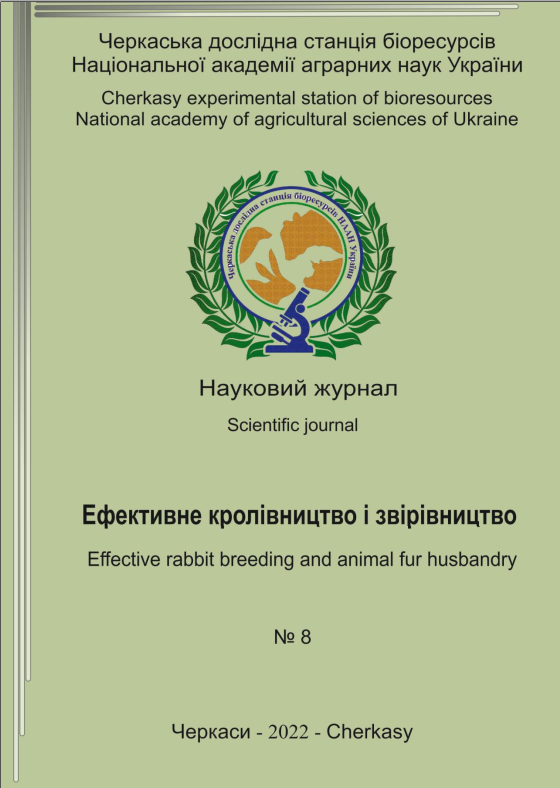FEATURES OF SELECTION AND BREEDING IN POPULATIONS OF SILVER-BLACK FOX AND POLAR FOX CAGE BREEDING
DOI:
https://doi.org/10.37617/2708-0617.2022.8.26-35Keywords:
fox, fox, breeding, crossing, selection traits, heredity, phenotype, consolidationsAbstract
Based on the results of a retrospective analysis of the breeding of the silverblack fox and the polar fox of the animal husbandry of the Cherkasy Regional
Consumer Union, a study of the variability and nature of the inheritance of
breeding traits by animals in a number of generations was conducted, the breeding
value was determined and the optimal schemes for the formation of families of fur
animals were substantiated. The results of studying the genealogical structure of
the polar fox population confirmed the presence of 25 lineages and 110 families.
For the silver-black fox population, this indicator was the presence of 37 lineages
and 120 families, which constitute the core of the population.
In the conditions of this animal husbandry, the degree of realization of the
genetic potential in the populations of fur animals is a high level of this indicator -
87.1-95.0%. The maximum values of this indicator are noted for quality indicators
of fur, since the variability of this feature between generations is insignificant. A
higher difference was traditionally observed for the body size indicator and for
such an indicator of reproductive capacity as fecundity of females - 87.1-88.0%.
The latter in the descendants was 0.28-0.68 goals. lower than the similar value for
herd and pedigree, respectively.
It was established that in the vast majority of cases of growth of the
indicator, the calculated coefficient increased in the first generation relative to the
parent herd and slightly decreased in the next generation, which may be due to a
higher level of variability of traits caused by genetic splitting of the trait in the next
generation.
The maximum values of phenotypic consolidation were registered according
to the body size indicator - 0.64-0.88 points. The minimum value was registered for
the population of polar foxes, respectively, the maximum value of the indicator was
registered for the first generation of silver-black foxes.
The progenitors of the lines in the polar fox population were characterized
by a fairly wide range of the breeding value index - 39-146 points. The main share
of breeders (10.61-23.48%) had a score within 139-144 points. For female heads
of families, this indicator was: 14.72-35.85% - 141-143 points, in general, the
range for the indicator of tribal value was within 139-146 points. The established
indicators for the silver-black fox population have a distribution of the share of
breeders and progenitors close to normal. Among males participating in the
selection process, the maximum share of animals 10.81-21.62% had 141-144 points according to the evaluation results, for females this indicator was registered
for animals evaluated 139-14 points (10.0-28.3 %).
For polar foxes, the maximum coefficient of phenotypic consolidation of
young (77-81%) was registered with the following variants of the combination of
pairs - AxA, BxB, CxC, the minimum (62%) with heterogeneous selection - CxA,
respectively. A similar trend was observed in the population of silver-black fox
animals, the maximum values of consolidation of young by a set of traits were
registered in animals whose parents, according to the results of the evaluation,
were combined in the following variants: AxA, BxB, CxC, the coefficient of
phenotypic consolidation – 72-83%. The minimum values were recorded with a
heterogeneous combination of pairs - 62-70%.


